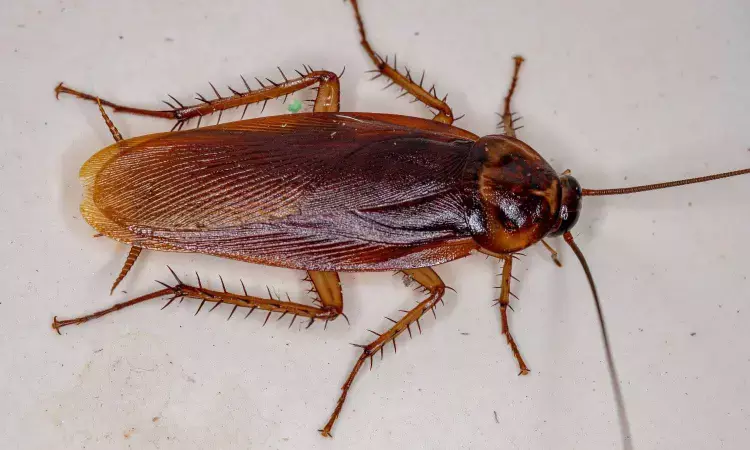- Home
- Medical news & Guidelines
- Anesthesiology
- Cardiology and CTVS
- Critical Care
- Dentistry
- Dermatology
- Diabetes and Endocrinology
- ENT
- Gastroenterology
- Medicine
- Nephrology
- Neurology
- Obstretics-Gynaecology
- Oncology
- Ophthalmology
- Orthopaedics
- Pediatrics-Neonatology
- Psychiatry
- Pulmonology
- Radiology
- Surgery
- Urology
- Laboratory Medicine
- Diet
- Nursing
- Paramedical
- Physiotherapy
- Health news
- Fact Check
- Bone Health Fact Check
- Brain Health Fact Check
- Cancer Related Fact Check
- Child Care Fact Check
- Dental and oral health fact check
- Diabetes and metabolic health fact check
- Diet and Nutrition Fact Check
- Eye and ENT Care Fact Check
- Fitness fact check
- Gut health fact check
- Heart health fact check
- Kidney health fact check
- Medical education fact check
- Men's health fact check
- Respiratory fact check
- Skin and hair care fact check
- Vaccine and Immunization fact check
- Women's health fact check
- AYUSH
- State News
- Andaman and Nicobar Islands
- Andhra Pradesh
- Arunachal Pradesh
- Assam
- Bihar
- Chandigarh
- Chattisgarh
- Dadra and Nagar Haveli
- Daman and Diu
- Delhi
- Goa
- Gujarat
- Haryana
- Himachal Pradesh
- Jammu & Kashmir
- Jharkhand
- Karnataka
- Kerala
- Ladakh
- Lakshadweep
- Madhya Pradesh
- Maharashtra
- Manipur
- Meghalaya
- Mizoram
- Nagaland
- Odisha
- Puducherry
- Punjab
- Rajasthan
- Sikkim
- Tamil Nadu
- Telangana
- Tripura
- Uttar Pradesh
- Uttrakhand
- West Bengal
- Medical Education
- Industry
Cockroach infestation linked to home allergen, endotoxin levels: Study

Researchers at North Carolina State University have shown a link between the size of cockroach home infestations and the levels of both allergens and endotoxins in those homes, with lowering roach infestation numbers through pest control triggering significant declines in the levels of allergens and endotoxins. The study’s findings suggest that eliminating cockroach infestations could help improve indoor environmental health by greatly reducing allergens and endotoxins.
Endotoxins are bacterial cellular components that get released when bacteria die. As omnivores that will eat just about anything, cockroaches have a rich and diverse gut microbiome. Previous research has shown that cockroaches shed a lot of endotoxins through their fecal matter, although house pets – and humans – can also shed endotoxins. The researchers in this study found that a large amount of the endotoxins found in household dust was associated with cockroach feces.
“Endotoxins are important to human health, as inhalation of these components has been shown to provoke allergic responses,” said Coby Schal, the Blanton J. Whitmire Distinguished Professor of Entomology at NC State and co-corresponding author of a paper describing the research. “Past surveys in U.S. homes found endotoxin levels much higher in homes with self-reported evidence of cockroaches; that association is stronger in low-income homes than in single-family homes.”
The study, held in multi-unit apartment complexes in Raleigh, N.C., compared estimated cockroach infestation sizes as well as allergen and endotoxin levels in homes infested by cockroaches. These baseline levels were tabulated by capturing settled and airborne dust in homes.
The researchers found significant amounts of endotoxins in infested homes, with female cockroaches excreting about twice the amount that males excreted.
“Female cockroaches eat more than males, so more endotoxins are shed from their fecal matter,” said Madhavi Kakumanu, an NC State research scholar in Schal’s lab and co-corresponding author of the paper. She added that more endotoxins were found in kitchens than in bedrooms, as more cockroaches live in kitchens where they find more food.
Infested homes were then divided into untreated homes and homes receiving an extermination intervention to eliminate cockroaches. The researchers also included a control group of homes that had no cockroaches. Cockroach counts and floor and airborne dust samples were taken three months and six months into the study.
The results showed that infested homes without extermination had very large amounts of both endotoxins and allergens at all timepoints.
Meanwhile, in most cases, infested homes that received the extermination intervention were rid of both cockroaches and their allergens, and experienced significant declines in endotoxins.
“When you eliminate cockroaches, you eliminate their allergens. Small decreases in cockroaches don’t lower allergen levels because the remaining live cockroaches deposit more allergens,” Schal said. “Endotoxins significantly decreased in homes where cockroaches were eliminated. This paper shows that the cockroach is the most important depositor of endotoxin in infested homes.”
“We also saw that allergens and endotoxins can be airborne,” Kakumanu said.
Schal added that next steps include further examining interactions between cockroach allergens and endotoxins in animal models of asthma, such as mice.
“There exists the implication that asthma can be worse due to interactions between allergens and endotoxins,” Schal said. “We want to see if that is the case in mice.”
Reference:
Madhavi L. Kakumanu, Zachary C. DeVries, Richard G. Santangelo, Jeffrey Siegel, Indoor allergens and endotoxins in relation to cockroach infestations in low-income urban homes, Journal of Allergy and Clinical Immunology Global, DOI:10.1016/j.jacig.2025.100571
Dr Kamal Kant Kohli-MBBS, DTCD- a chest specialist with more than 30 years of practice and a flair for writing clinical articles, Dr Kamal Kant Kohli joined Medical Dialogues as a Chief Editor of Medical News. Besides writing articles, as an editor, he proofreads and verifies all the medical content published on Medical Dialogues including those coming from journals, studies,medical conferences,guidelines etc. Email: drkohli@medicaldialogues.in. Contact no. 011-43720751


